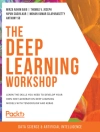This Springer Brief presents the fundamentals of driver drowsiness detection systems, provides examples of existing products, and offers guides for practitioners interested in developing their own solutions to the problem. Driver drowsiness causes approximately 7% of all road accidents and up to 18% of fatal collisions. Proactive systems that are capable of preventing the loss of lives combine techniques, methods, and algorithms from many fields of engineering and computer science such as sensor design, image processing, computer vision, mobile application development, and machine learning which is covered in this brief. The major concepts addressed in this brief are: the need for such systems, the different methods by which drowsiness can be detected (and the associated terminology), existing commercial solutions, selected algorithms and research directions, and a collection of examples and case studies. These topics equip the reader to understand this critical field and its applications. Detection Systems and Solutions: Driver Drowsiness is an invaluable resource for researchers and professionals working in intelligent vehicle systems and technologies. Advanced-level students studying computer science and electrical engineering will also find the content helpful.
Daftar Isi
Introduction.- Driver Drowsiness Detection and Measurement Methods.- Commercial Solutions.- Research Aspects.- Examples.












